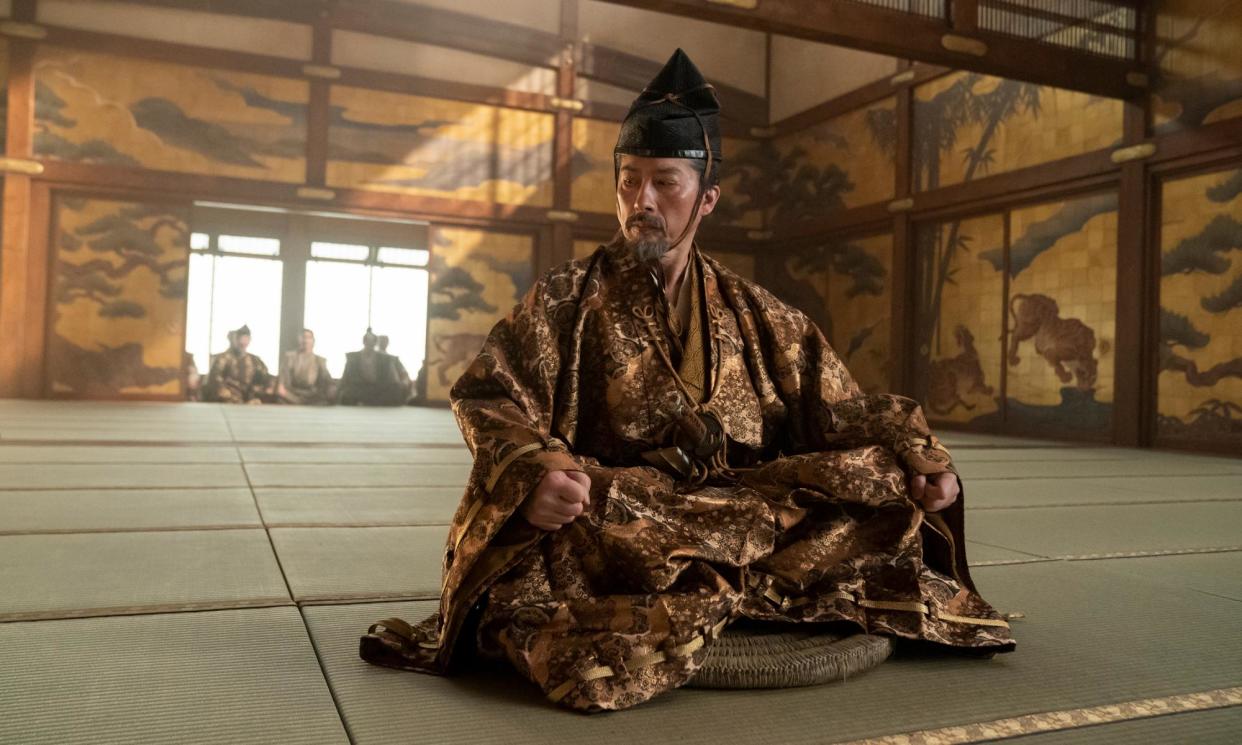The Guide #130: Shōgun’s TV mastery

It’s been a little quiet for TV so far in 2024, hasn’t it? Sure, One Day was a treat, Mr Bates v the Post Office was significant to say the least and The Traitors was nothing short of an event – and, yes, there’s also been Mary & George, Mr & Mrs Smith, final seasons of Curb and How to With John Wilson, and Masters of the Air as well … OK, my argument is crumbling a little. Still, I do think that we’ve been missing the sort of grand, hefty drama that, from the very first frame, seems destined for the upper reaches of the end-of-year lists.
But good news: that show is here, and it’s called Shōgun (airing Tuesdays on FX in the US, and Disney+ in the UK). Four episodes in and there is a distinct vibe around this series, a feeling that it is quickly attaining that combination of mass attention and acclaim that all the major shows have. It has attracted an impressive number of eyeballs for our fractured post-streaming age, and as its storylines intensify (the end of its fourth episode has teed things up very nicely in that regard), noise around the series is only going to grow.
An adaptation of James Clavell’s hefty historical novel, Shōgun is set in the Sengoku period of feudal Japan, where a political vacuum has opened up following the death of the country’s supreme ruler, whose heir is not old enough to take to the throne. Into this febrile situation floats John Blackthorne (Cosmo Jarvis), a roguish English sailor who has been tasked by his Dutch Protestant paymasters with disrupting Portuguese Catholic merchants, who have been busy establishing trade routes with the Japanese. Blackthorne is considered a “barbarian” by the Japanese and he and his crew look unlikely to last very long in this new land (indeed, one crew member meets a very unpleasant end early on – this is not a show for the squeamish). But Yoshii Toranaga, a powerful daimyō (feudal lord) and one of the five regents vying for ultimate power, suspects that Blackthorne, with his knowledge of western weaponry, might be worth keeping around.
Inevitably, Shōgun has been compared with Game of Thrones, because we are obliged to do that with any historical drama where lots of people violently cark it. Shōgun does, though, have a better claim than most. In its succession-crisis plotting, unashamedly antiheroic lead characters, and lashings of gore, it does strikingly resemble Thrones’ first season, back when the fantasy drama was going very light on the fantasy, and instead focusing on political intrigue and gnarly beheadings. In both seasons you can see intemperate heads prevailing over cool ones, malevolent figures tinkering away in the background and peace shifting slowly into war. Given where Game of Thrones ended up, a show that seems to take the qualities of its earlier, more grounded seasons, rather than its later ones, is welcome.
What is particularly impressive about Shōgun is that it gets so much right when the potential for disaster is so high. This after all is an adaptation of a novel about feudal Japan but seen through the eyes of a westerner, a setup that practically begs for accusations of Orientalism. The original 1980 adaptation didn’t even bother to provide subtitles for its Japanese characters, so centred was it on its white saviour protagonist. Here, though, while Blackthorne is the show’s nominal lead, he is just one small thread in a complex tapestry. Jarvis is plenty watchable as Blackthorne, pitching his Protestant plunderer somewhere between Laurence Olivier and Tom Hardy at his most wild-eyed. But just as central a character, and arguably a more compelling one, is Sanada’s Toranaga, a genius-level military strategist whose inscrutability and quick-eyed cunning energises every scene he serenely strolls into.
Like Toranaga, always ready to capitalise on his rivals’ mistakes, Shōgun’s creators seem to revel in the shifting allegiances and complex codes of the particularly fraught period of feudal-era Japan in which the show is set. But they do sweat the small stuff as much as the grand overarching details – and the series has been praised in Japan for showing precision and respect in its recreation of the period.
The result of all this is the show of the moment. But there’s a catch: Shōgun is being sold as a limited series. Once its 10th episode airs, that – in theory – is it. It’s hard to imagine FX/Disney not capitalising on its success in some way, and there are further novels in what Clavell called his Asian saga to crib from – though those novels are all set centuries later in different locations (Hong Kong, Singapore, Iran). So this is likely it for Blackthorne, Toranaga et al. Enjoy them while you can.
If you want to read the complete version of this newsletter please subscribe to receive The Guide in your inbox every Friday


